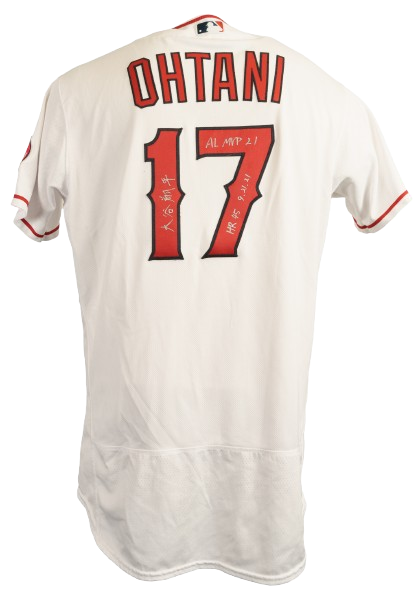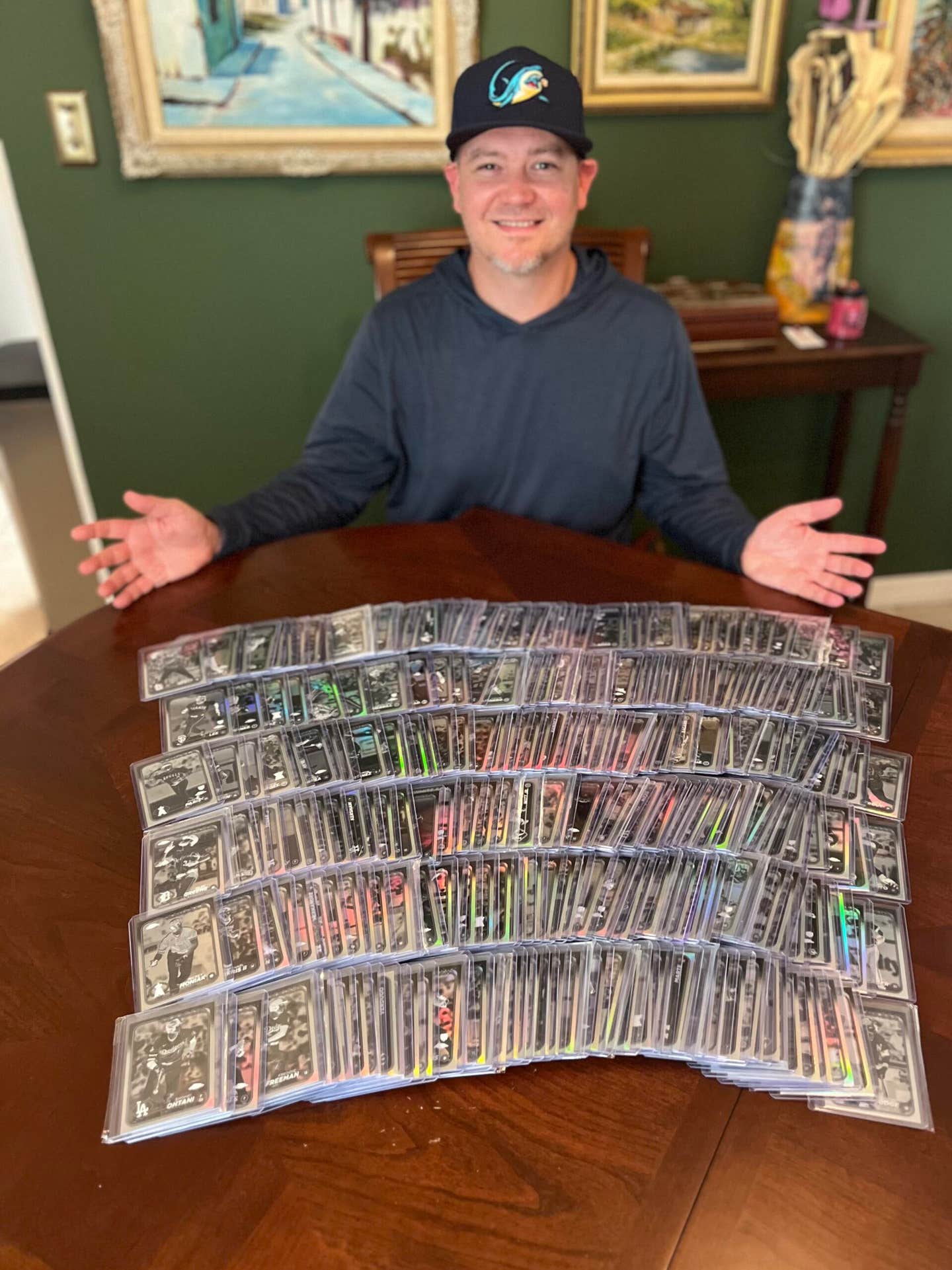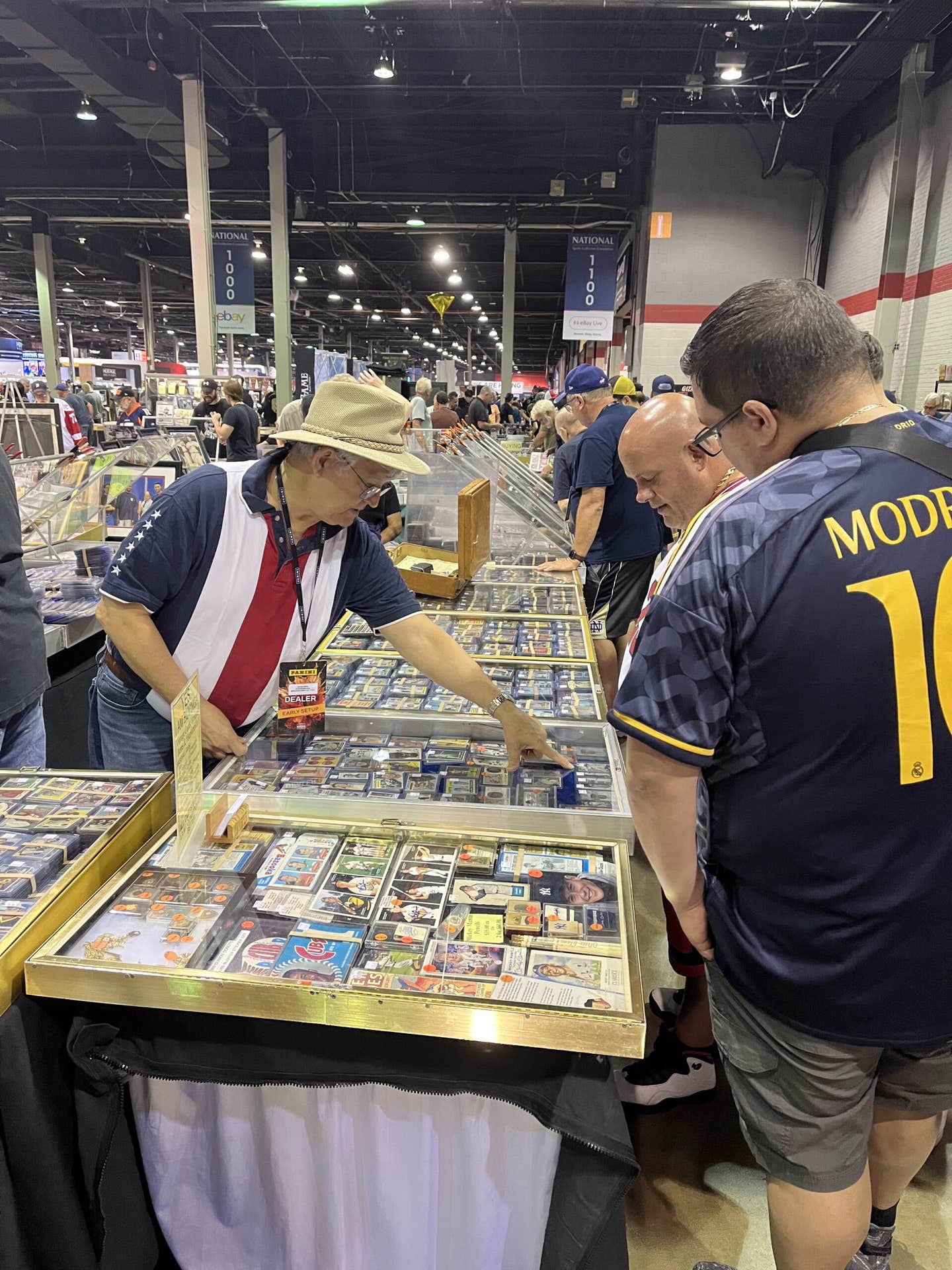News
Tom Glavine: Lefty Does Right
By Robert Grayson
If things had worked out just a little bit differently, Tom Glavine might be looking at his plaque in the Hockey Hall of Fame in Toronto, rather than the one he has in Cooperstown, N.Y.
In 1984, the same year the young left-handed hurler was drafted by the Atlanta Braves, he was also drafted by the Los Angeles Kings of the National Hockey League. Before pro teams in both sports showed an interest in him, Glavine was leaning toward going to a college with a good hockey program that also fielded a relatively strong baseball team. He wanted to play both sports at a college that had competitive teams and faced tough opponents, both on the ice and on the diamond.
At Billerica High School in his native Massachusetts, Glavine was not only a star baseball and hockey player, but an excellent student, as well. A member of the National Honor Society, the future major leaguer was a pitcher for his high school baseball team and a center on the hockey team.
Looking back, Glavine says he didn’t come that close to playing professional hockey.
“Even though I was drafted by the Kings, I was leaning toward playing college hockey on a scholarship,” he said. “But when I got drafted by the Braves, I knew it was an opportunity I had to consider seriously. Then it came down to a decision – taking advantage of a college scholarship or taking a chance on professional baseball. At the time, going into pro baseball seemed like the right move. Thank God I don’t have to second-guess that.”
One of the overriding factors that led Glavine to a baseball career was being a southpaw, which gives a player a decided edge in baseball but has no impact in hockey. While the lefty might not have been ready to make the leap from high school to pro hockey, the Kings thought he was and selected him two rounds ahead of Luc Robitaille, who was eventually selected by the Kings 171st overall. Glavine was the 69th overall pick. The former Braves hurler was also chosen ahead of Brett Hull in the 1984 NHL draft. Hull went 117th overall to the Calgary Flames. Both Robitaille and Hull are in the Hockey Hall of Fame.
So you can’t blame Glavine for occasionally thinking about what might have been.
“I do wonder, at times, how far I might have gotten if I’d gone into pro hockey. I always loved the game and still play,” Glavine said. But those thoughts about glory on the ice don’t last long, edged out by all the memories and highlights from 22 years on a major league diamond.
With a calm demeanor and steely determination, Glavine won 244 games with the Atlanta Braves over 17 seasons, (1987-2002, 2008) and 61 games with the New York Mets (2003-07). His 305 total wins as a major league hurler make him the fourth-winningest left-hander in big league history.
Between 1993 and 2002, Glavine, along with teammate right-hander Greg Maddux, made up one of the top 1–2 pitching combinations in baseball history. With John Smoltz in the mix, the Braves fielded one of the finest pitching rotations to ever grace the diamond. The trio claimed seven Cy Young Awards from 1991-98, though Maddux won his first while still with the Chicago Cubs. Glavine won the top pitching honors in 1991 and 1998, Maddux in 1992-95 and Smoltz in 1996.
“You can imagine some of the great discussions I had about pitching when I was with Greg and Smoltzie in the dugout,” Glavine recalls. “We all fed off each other.”
While Maddux joined Glavine in Cooperstown this year, Smoltz played one year longer than his Atlanta colleagues and won’t be eligible for the Hall of Fame until next year.
“I give him a little grief about that every now and then,” Glavine said. “ ‘If you had quit a bit sooner, you would have been here with us,’ I tell him. But his day will be coming soon.”
A 10-time All-Star, Glavine says being around Maddux and Smoltz made him a better player: “Just watching them pitch. Seeing how competitive they were. Watching how they attacked each hitter, their mind-set. You picked up things you added to your game. They motivated me. You wanted to keep up with them.”
The newly minted Hall of Famer is quick to give Smoltz credit for having a sharp pair of eyes, able to pick up even minor flaws in another pitcher’s mechanics. Smoltz then could tell him how to correct the problem.
“Greg and I relied heavily on Smoltzie’s observations,” the two-time Cy Young Award winner recalls.
Glavine also says he learned a great deal about pitching from Maddux, noting that his teammate taught him that hitters were a great source of information.
“Things like how a hitter swings and misses, the pitches he’s fouling off, all help you come up with a sequence of pitches for each hitter,” he said. “Greg used to talk in terms of pitching a perfect game, but not from a statistical standpoint. A perfect game in terms of you as a pitcher executing every pitch exactly the way you wanted to.”
Maddux, in turn, taught Glavine that “You don’t have to be 100 percent physically to pitch effectively. He never had to say it. I saw it.”
Glavine admits to pitching through some aches and pains, but says the style of pitcher he was allowed him to do that.
“I wasn’t a velocity-type guy. So if I had a sore something and I had to go out there with a little less velocity to get through the game, it was no big deal. I just had to focus more on location,” the lefty said.
Glavine didn’t go on the disabled list until very late in his 22-year major league career; in fact, it was in his final season in 2008. The then-42-year-old hurler went on the DL several times that season with recurring discomfort in his left elbow.
Road to success
Though Glavine had a remarkable big league career, he ran into difficulty early on. After spending nearly four seasons in the Atlanta Braves’ minor league system (1984-87), Glavine got called up to the bigs in mid-August 1987. His first major league start came against the Houston Astros on Aug. 17, and the opponents were not very welcoming.
Houston scored six runs in 3-2/3 innings against Glavine, while knocking out 10 hits.
Glavine went 2–4 for the rest of the 1987 season, racking up a 5.54 ERA. But the Braves believed in the young left-hander and stuck with him, bringing the Massachusetts native back in 1988. His tough times continued, however, and in 1988, Glavine lost 17 games while only winning 7. His ERA remained high, at 4.56, for a woeful Atlanta team that finished in sixth place in the National League West, 39-1/2 games behind the first-place Los Angeles Dodgers.
Then in spring training of 1989, Glavine found the pitch that would help make his Hall of Fame career. The young southpaw was shagging flies in the outfield when a baseball rolled up to him. As he picked it up, he grabbed the errant baseball with his middle and ring fingers along the seam. When he threw it back to the infield, the ball had a bit more of a sink to it than the way he usually threw the ball. Glavine thought this could be a pretty good pitch and began perfecting and learning how to control it.
He started using it during spring training games and was getting people out. The pitch confused batters, who couldn’t seem to lay off it, even though they knew it would take a sharp dip. Glavine began winning games with the new pitch as part of his repertoire. He compiled 14 wins in 1989 and by 1991, he was the ace of the Braves pitching staff, notching his first 20-win season. He would go on to win 20 or more games four more times (1992, 1993, 1998 and 2000).
With Glavine leading the way, the Braves made it to the World Series in 1991 against the Minnesota Twins. The 1991 Fall Classic would prove to be one of the most hard-fought series ever. Five of the series games were low-scoring contests, decided by just one run. Three of the games went into extra innings. Glavine lost Game 2 by a 3–2 score, pitching a great game. He came back to win Game 5 as the Braves defeated the Twins 14–5. The Braves eventually lost the series in seven games.
The seventh game, played in Minnesota, was tied 0–0 after nine innings and the Twins pulled out a win in the bottom of the 10th inning. Minnesota left fielder Dan Gladden led off the bottom of the 10th with a bloop double. He was sacrificed to third by Twins second baseman Chuck Knoblauch and scored on pinch-hitter Gene Larkin’s single.
Despite the loss of the 1991 World Series, the Braves had come a long way since their days of last or near last place finishes from 1985-90. Glavine and company were now determined to win a World Championship.
The Braves returned to the World Series in 1992 and faced the Toronto Blue Jays. In yet another hard-fought World Series, the Braves were once again denied the coveted World Championship banner. The Blue Jays beat Atlanta in six games, winning Game 6 in dramatic fashion in 11 innings to end the 1992 Fall Classic.
Glavine won Game 1 of the 1992 series 3-1, beating Toronto’s Jack Morris. However, Atlanta’s ace lost a tough Game 4 by a 2–1 score. Glavine admits that after losing the 1992 World Series, many players on the team were wondering “what they had to do to win it all.” They’d get another chance, but not until 1995.
After defeating the Colorado Rockies in four games in the National League Division Series and sweeping the Cincinnati Reds in the National League Championship Series, the Braves entered the 1995 World Series against the Cleveland Indians. Cleveland had defeated the Boston Red Sox in the first round of the playoffs and the Seattle Mariners in the second round to get to the Fall Classic.
By now, close World Series games were nothing new for the Braves, and the 1995 Fall Classic had plenty of them. Five of the six games were one-run decisions. But this time Atlanta captured its World Championship, beating the Indians in six games. Glavine got the win in the final game, combining with Atlanta’s star reliever, Mark Wohlers, to pitch a one-hit shutout to defeat Cleveland 1–0 and win the series.
Game 6 was the second contest of the series Glavine won; he also defeated the Indians 4-3 in Game 2. In recognition of his stellar performance, he was named the 1995 World Series Most Valuable Player. Adding to the excitement, the Braves won the Series at home and were able to celebrate the victory with 51,875 championship-starved fans on hand, as well as the rest of the city of Atlanta and the state of Georgia.
The 1995 World Championship was only the third in Braves history. The first came in 1914, while the Braves played in Boston. They captured their second World Series trophy in 1957, when Milwaukee was called home.
Glavine calls being on top of the baseball world one of the greatest moments of his life. But 1995 does not stand out in his mind as his best season personally.
“For me, probably my best year was ’98, my second Cy Young. I think, looking back at it, the reason I say 1998 is my best year is that was the one year I went through the whole season and didn’t feel like I got into some kind of funk on the mound with my mechanics,” he said. “Every other year, no matter how good the year went, I always felt there was a stretch of time – whether it was a start or a couple of starts – where things just didn’t feel right. I didn’t feel comfortable. I was fighting myself on the mound. In ’98, for whatever reason, I felt good the entire season and never felt my mechanics got out of whack.”
For Glavine, the key to success was always trying to improve.
“Every winter, whether I had a Cy Young Award season or not, there were always things I felt I could do better the next season, and I worked on that. I always felt I could improve.”
In all, Glavine won a World Championship, five National League pennants and 11 division titles with the Braves. Following the 2002 season, Glavine became a free agent and signed with the New York Mets. Unfortunately, he did not enjoy as much success with the Mets as he had with the Braves. But he was a strong and experienced influence in the clubhouse and got his 300th career win with the club on Aug. 5, 2007.
The veteran hurler won 13 games in 2005 and again in 2007, and notched 15 victories in 2006. He helped the New York Mets win the National League East in 2006, ending Atlanta’s 11-year stranglehold on the top spot. Glavine led the Mets to a sweep of the Los Angeles Dodgers in the 2006 National League Division Series, winning Game 2 by a 4–1 score. He got the Game 1 victory against the St. Louis Cardinals in the National League Championship Series in 2006, winning 2-0. But the 10-time All-Star lost the fifth game 4-2. The Mets ultimately lost the series to the Redbirds in seven games.
Glavine describes being with the Mets as “a great five years of my career. I had a lot of fun in New York and made a lot of great friends there – both teammates and people in the organization. Playing in New York is an experience every player should have.”
In 2008, after five seasons with the Mets, the southpaw returned to the Braves for one more season before retiring.
Though many people felt Glavine would go into the Baseball Hall of Fame on the first ballot, he says nothing is a sure thing.
“Had I not gotten into the Hall of Fame when I did, the biggest disappointment would have been the missed opportunity to go in with Greg (Maddux) and Bobby (Cox), two people who had such an impact on my career. It’s rare to get into the Hall of Fame and even rarer to go in with a teammate and your manager,” he points out. “This meant a lot to me.”
Though neither Glavine nor Maddux threw a 100-mile-per-hour fastball or close to it, both were dominant pitchers. Glavine says he hopes that fact furthers the notion that there is “more than one way to get the job done. I hope teams take a look at a young pitcher who has talent but is not the hardest thrower and see a place for him in the game.”
Robert Grayson is a freelance contributor to SCD. He can be reached at graydrew18@aol.com.








